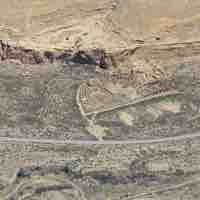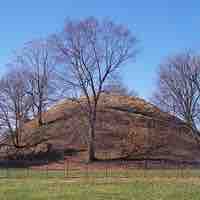Chapter 14
Native-American Art Before 1300 CE
By Boundless
Mesoamerica was dominated by 3 cultures in the Pre-Classical (up to 200CE) to Post-Classical periods (circa 1580 CE): the Olmec, Maya, and Aztec.

The Olmec culture of the Gulf Coast of Mexico produced the first major Mesoamerican art, and is particularly known for the creation of colossal stone heads.

At its height, Teotihuacan had a population of 200,000, was a primary center of commerce and manufacturing, and was one of the largest cities in the world.
Mayan art includes a wide variety of objects, commissioned by rulers, that depict scenes of both elite and everyday society.
The production of ceramic figurines are a hallmark of Classic Veracruz art. The Veracruz people produced a variety of these small clay figures in multiple areas around the modern state of Veracruz, Mexico.
Mixtec culture had a unique and complex writing system that used characters and pictures to represent complete words and ideas instead of syllables or sounds. They made codices to document important historical events in their society.
The ceramic objects of the Paracas, Nazca, and Moche communities of Peru are varied in artistic forms and were important cultural artifacts. Likewise, the Tiwanaku and Waki people of Bolivia and their contemporaries, the Wari people of Peru all produced pottery that was multifaceted in both aesthetics and utility.
Chavín de Huántar and Tiwanaku were important ceremonial centers in pre-Inca South America.

Southwestern indigenous cultures have produced a variety of architectural, artisinal, and ritual art forms for centuries.
Inuit art refers to artwork produced by the people of the Arctic, or Inuit people, who were previously known as Eskimos.

Eastern Woodland cultures are known for their production of a variety of art forms, from pottery to substantial earthen mounds for burial.